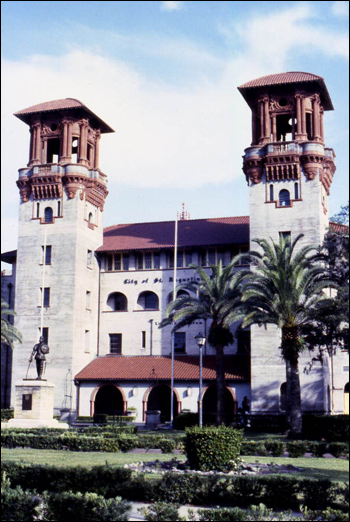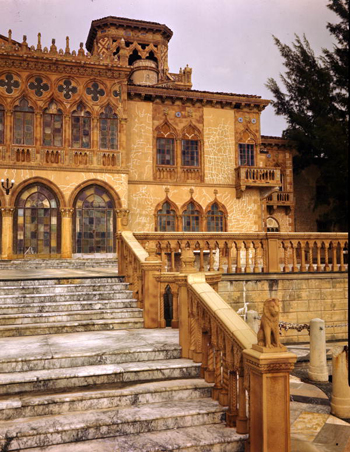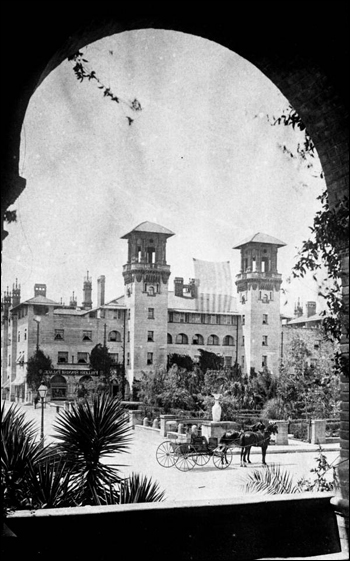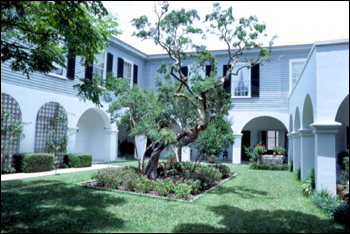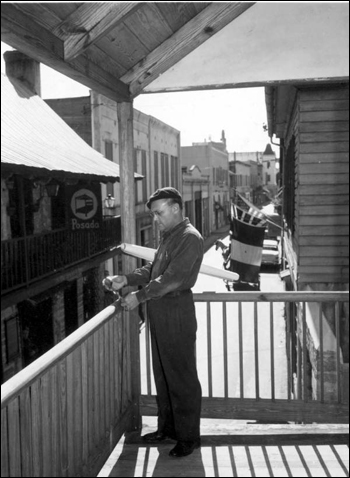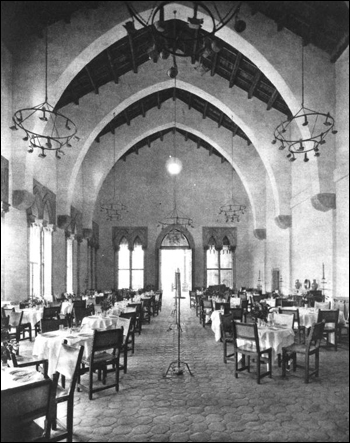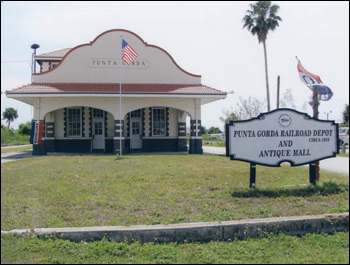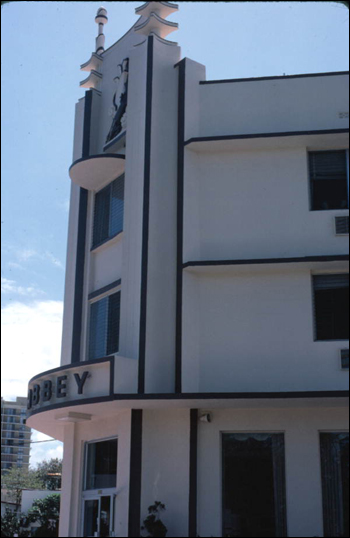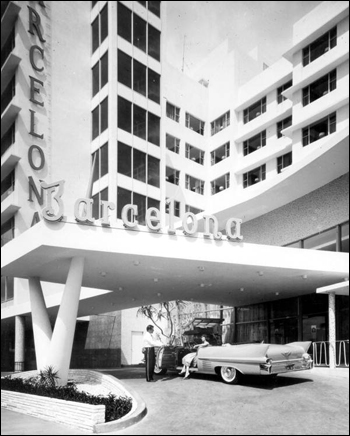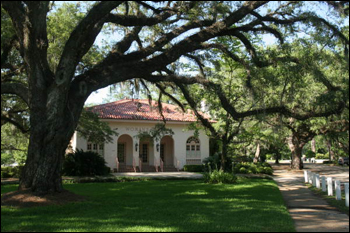Photo Exhibits
Photo exhibits spotlight various topics in Florida history, and are accompanied by brief text intended to place selected materials in historical context.
Spanish Architecture in Florida
From Spanish Revival to Miami Modern
More traditional, Spanish-inspired revival architecture, which left lasting contributions in public buildings, commercial structures, and private residencies across the state, also influenced the modernist trends that architects applied to Florida buildings for the rest of the 20th century. Art Deco, Miami Modern, Florida International, and other architectural styles reflected the lasting influence of Florida's Spanish heritage.
Lightner Museum building: Saint Augustine, Florida (1982)
Image Number: PR14350
View of the Ringling Mansion "Ca'd'Zan" in Sarasota, Florida (ca. 1940)
Image Number: JSS0992
Alcazar Hotel: St. Augustine, Florida (1893)
Image Number: N039481
Photograph taken from the portico of the Ponce de Leon Hotel, April 1893.
Courtyard at the Peck House: Saint Augustine, Florida (1982)
Image Number: PR14368
Albert Manucy
Image Number: PR09577
Albert Manucy was one of Florida's most important early historians, especially of Spanish Colonial Florida and Saint Augustine architecture. He worked for the National Park Service at the Castillo de San Marcos, located in his hometown of Saint Augustine. After receiving a Master's from the University of Florida in 1934, he began with the NPS first as a WPA worker, then fulltime. He was one of NPS's first historians. He later studied Spanish architecture as a Fulbright scholar. Among his published works are "The Houses of Saint Augustine, 1566-1821" and "Sixteenth Century Saint Augustine: The People and Their Homes."
Dining room of the Cloister: Boca Raton, Florida (ca. 1928)
Image Number: PR00994
Punta Gorda Railroad Depot and Antique Mall (ca. 2006)
Image Number: PR20732
Accompanying note: "This is an example of the Mediterranean Revival Architectural style. Building was closed in 1971 and purchased by Fred C. Babcock. In 1996, Mr. Babcock made it possible for the Punta Gorda Historical Society to purchase the Depot. Volunteers began its restoration and after several years of local donations and volunteer labor, a grant from the Florida Department of Historical Resources was received which helped to complete the restoration. The Depot is now open to the public six days a week (except July and August) from 10:00 a.m. to 4:00 p.m. The Depot is maintained by proceeds from an Antique Mall located in the freight room. The Ticket Office, colored and white waiting rooms are museum areas."
Example of South Florida art deco architecture (ca. 1978)
Image Number: FS78620
Accompanying note: "This is an example of the Mediterranean Revival Architectural style. Building was closed in 1971 and purchased by Fred C. Babcock. In 1996, Mr. Babcock made it possible for the Punta Gorda Historical Society to purchase the Depot. Volunteers began its restoration and after several years of local donations and volunteer labor, a grant from the Florida Department of Historical Resources was received which helped to complete the restoration. The Depot is now open to the public six days a week (except July and August) from 10:00 a.m. to 4:00 p.m. The Depot is maintained by proceeds from an Antique Mall located in the freight room. The Ticket Office, colored and white waiting rooms are museum areas."
Example of South Florida art deco architecture (ca. 1978)
Image Number: RC21124
Accompanying note: "This is an example of the Mediterranean Revival Architectural style. Building was closed in 1971 and purchased by Fred C. Babcock. In 1996, Mr. Babcock made it possible for the Punta Gorda Historical Society to purchase the Depot. Volunteers began its restoration and after several years of local donations and volunteer labor, a grant from the Florida Department of Historical Resources was received which helped to complete the restoration. The Depot is now open to the public six days a week (except July and August) from 10:00 a.m. to 4:00 p.m. The Depot is maintained by proceeds from an Antique Mall located in the freight room. The Ticket Office, colored and white waiting rooms are museum areas."
View showing the historic Woman's Club of Tallahassee building at 1513 Cristobal Drive in the Los Robles subdivision (2009)
Image Number: PR76174
The building was dedicated on April 19, 1927. It was listed on the National Register of Historical Places on November 20, 1987.

 Listen: The Folk Program
Listen: The Folk Program